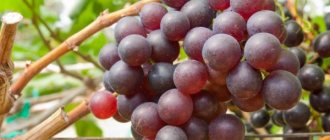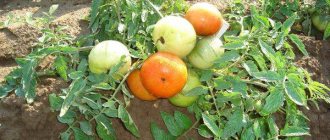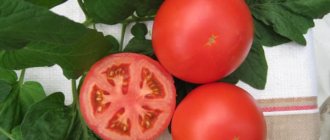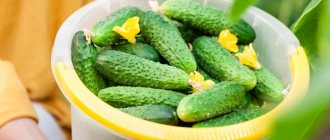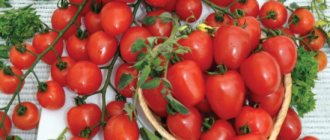Among the new products in the selection collections, the black grapes “in memory of Negrul” have consistently occupied a leading position for several years. Appetizing appearance, unpretentiousness, excellent taste - this is not the whole list of advantages of this time-tested variety. It appealed to the taste not only of amateur gardeners, but also of the “sharks” in the viticulture business for cultivation on an industrial scale.
History of variety selection
The Memory Negrul grape variety appeared as a result of successful research by Moldovan breeders. The goal of the scientific work of the employees of VPO "Vierul" was to create a grape hybrid with high-quality characteristics. The main attention was focused on developing varieties with resistance to fungal infections and frost, high yield, good taste and transportability.
In 1975, a parent pair was selected - the Datier de Saint-Vallier and Corna Negra varieties - and the Memory Negrul grape was bred. Some sources mention a second parent species - Pierrell (SaveVillard 20-366). The Memory Negrul variety was registered in 2015, but only in the Moldavian Republic. Until now, there are no entries in the State Register of the Russian Federation.
Reviews from winegrowers
The Memory Negrul grape variety is good because it lacks individual “whims”, and is also interesting because the cultivation technology is accessible to a wide range of gardeners.
Semyon Vasilievich, Krasnodar region
I grow only 1 bush of this vine, but it bears fruit perfectly, enough for the whole family. Ripens in early September and is stored in the cellar until the new year.
Anatoly Ivanovich, summer resident, Moscow region
There is only one bush on the plot, but the harvest is good, it overwinters under spunbond and does not get sick. The clusters are beautiful, the berries are large and tasty, refreshing, but without astringency. For prevention, I carry out two additional sprays against diseases.
Description of the Memory Negrul grapes
For gardeners, any parameters describing the Memory Negrul grape variety are important. Although they are most interested in yield, the appearance of the plant also affects the ability to grow the variety.
The grape variety forms powerful tall bushes. The length of the shoots is about 3 m, they ripen in almost one growing season, and are colored light brown. Fruitful specimens make up a significant part of the total number - at least ¾ of the shoots. The bush can easily bear such a load.
The flowers of the grape variety are bisexual. This allows you to grow the variety without pollinating neighbors.
The clusters of the Pamyati Negrulya variety are large, medium-loose in density, and cylindrical-conical in shape. According to gardeners, the Memory Negrul grapes weigh up to 0.5 kg per bunch; with good care, specimens weigh 1.5 kg. Brush length 20 cm, width 12-14 cm.
The berries are elongated and have a rich dark purple hue. A dense waxy coating gives the fruit a color closer to blue. The grapes have a slight point at the tip. Weight reaches 7-9 g, length 3 cm. The pulp is juicy, fleshy, there are 2-3 seeds inside the berries, the peel is medium thick. The sugar content of ripe grapes is 14%. The taste is sweet with a slight sourness.
The grape variety is recommended for planting in the regions of the middle zone and areas with areas of uncovered viticulture. It is even grown in Siberia and the Urals. In the photo there are grapes in Memory of Negrul:
Advantages and disadvantages
Before planting grapes, it is necessary to find out all the advantages and disadvantages of the selected variety.
Pros:
- High yield.
- High rates of transportability and storage.
- Versatility of use.
- Frost resistance down to -25ºС.
- High immunity to mildew, oidium, gray rot, phylloxera, and grape mite.
Minuses:
- The need for crop rationing.
Characteristics of the grape variety In Memory of Negrul
To fully familiarize yourself with the characteristics of the Pamyati Negrul grape variety, just read the reviews of gardeners and the description of the originator. This will make it possible to understand the advantages and disadvantages of the species, and to correctly organize the order of agrotechnical measures.
Drought resistance, frost resistance
One of the most important characteristics of a grape variety, thanks to which it is grown even in relatively cold regions. With proper shelter, a grape vine can tolerate temperatures below -26°C without freezing. And with average winter temperatures down to -23 °C, it can remain without shelter.
Productivity and fruiting
The grape variety belongs to the middle or medium-late period of fruit ripening. 145-160 days pass from the beginning of the growing season before the harvest begins. Berry picking begins in early September. Subject to the requirements and recommendations of agricultural technology, winegrowers remove up to 45 kg from one mature vine.
Fruiting rate 0.7-0.8%. The grapes begin to bear fruit in the second year after planting. The berries are sweet, there is some sourness in the taste, but only a little. Some gardeners note the presence of plum notes.
The Memory Negrul variety is not prone to shedding. The brushes are well preserved on the vines until frost sets in. It is not afraid of drought, so the yield does not decrease even in unfavorable weather conditions. Cracking of berries may occur in very rainy years due to excess moisture.
Area of application of fruits
In Memory of Negrul - table variety. Fresh grapes are used to make wine or juice. The keeping quality and transportability of the grapes are excellent, which makes it possible to enjoy the berries for a long time. The high storage capacity is due to the characteristics of the variety, in particular, the ripening period and the density of the skin. On an industrial scale, grapes are grown for the market; they are not used in large quantities for winemaking.
Resistance to diseases and pests
According to the description, the variety is a disease-resistant grape variety. Its resistance to fungal infections, rot, mildew and oidium is noted. Among the pests, phylloxera is not dangerous to it.
Advantages and disadvantages of the variety
For ease of perception of information, you can group the advantages and disadvantages of Memory Negrul grapes.
Pros:
- Self-fertility. The presence of bisexual flowers eliminates the need for winegrowers to plant pollinators.
- Stable yield, independent of temperature fluctuations.
- Transportability. After transportation over long distances, the bunches retain their presentation, and the taste of the fruit does not deteriorate.
- Keeping quality. The berries are well preserved on the vines or in the refrigerator; they remain in the basement until January.
- Good survival rate of planting material.
- Versatility of application of hearths. Some summer residents recommend making grape juices and compotes from this variety.
- High frost resistance due to the bushes being rooted.
- Drought resistance of the plant.
- Persistent immunity to crop diseases and pest attacks (except birds).
Minuses:
- Requires shelter in areas with temperatures below -26°C.
- The need to regulate the load of the vine.
The advantage of the positive aspects is obvious.
Pest Control
It is known from practice that, regardless of the disease resistance of grape varieties, preventive treatment methods should not be excluded. The most common composition is Bordeaux mixture. Fungicides are used to prevent fungal infections, insecticides to protect against pests.
For your information! Carbolineum is an effective remedy against phylloxera, which affects every second grape bush.
Treatment for diseases should always be carried out for preventive purposes.
Any gardener can grow the Memory Negrul grape variety on his own plot. This is a godsend for experienced summer residents and beginners. Proper care guarantees a good harvest, and compliance with storage conditions will ensure reliable preservation for a long time.
Rules for planting grapes
Planting the variety will not pose any particular difficulties even for beginners. The variety is distinguished by good survival rate of seedlings and unpretentiousness to growing conditions.
Recommended timing
The variety is equally suitable for spring and autumn planting. For spring, the optimal time would be April-May; for autumn, choose the time before the onset of frost. It depends on the region.
Choosing a suitable location
When choosing a location, the composition of the soil should be taken into account. Grapes of this variety do not tolerate saline soils, clayey soil, or high groundwater levels. Grows well on loam, black soil, and moisture-permeable soil. You should also try to select a sunny, windless area for the grapes.
Selection and preparation of planting material
When selecting seedlings, special attention is paid to the condition of roots and growth. A grape seedling should have 3-4 roots, a base thickness of at least 2 mm, and a growth length of 20-25 cm.
Before planting, the roots are cut off and dipped in a clay mash. The shoot is also trimmed, leaving no more than 4 buds.
Landing algorithm
The planting process for the variety is traditional and does not have any special differences:
- Prepare a planting hole for grapes in advance. For spring planting, it is optimal to do this in the fall, for autumn planting 3 weeks before the scheduled date.
- The parameters of the pit are depth 80 cm, diameter 100 cm.
- Place a layer of drainage on the bottom. Gravel, crushed stone and sand will do. Then a layer of fertile soil with the addition of humus, wood ash (500 g), potassium chloride (200 g) and superphosphate (400 g).
- Place the seedling, straighten the roots, cover it with soil without mineral fertilizers, then cover with the prepared mixture.
- Lightly tamp, water generously, and mulch the area around the trunk.
After planting, it is recommended to fix the stem on a peg to guide the growth of the grapes.
Agrotechnical features
From the point of view of unpretentiousness and simplicity of agricultural technology, the variety can be called unique. It forgives inexperienced winegrowers many of their mistakes, and is able to grow and bear fruit with dignity under conditions of minimal care.
Memory Negrul for planting prefers light fertile soils on gentle slopes with a southern exposure, but outside of these ideal conditions it adapts well to both flat places and heavier soil composition. Only swampy, flooded areas, salt marshes, areas with close groundwater, lowlands and cold northern slopes are not acceptable for the variety. Due to its tolerance to phylloxera, grapes can be successfully cultivated on their own roots, which is facilitated by good rooting. However, on heavy clay soils, where the root pest is especially harmful, it is still preferable to propagate by grafted seedlings based on phylloxera-resistant rootstocks. The best options for rootstock forms are considered to be Riparia x Rupestris 101−14 and Berlandieri x Riparia CO4, with which our hero demonstrates good fusion.
Almost everywhere in areas where the Memory of Negrul is widespread, it grows without shelter for the winter. It is recommended to cultivate vigorous grape bushes according to the double-armed cordon pattern at a medium-height bole. However, when trying to grow it in regions somewhat north of the traditional zones, it is worth thinking about protection from the cold in winter. The most reliable option would be to choose a covering formation based on the principle of an inclined cordon or a multi-armed fan, thanks to which the vine can be easily removed from the trellis and buried in the ground for the winter. It is not advisable to arrange additional insulation, since even in the northernmost regions where the variety has time to ripen, winter temperatures are unable to damage its vine if it is covered with earth. Semi-covering formations are also quite appropriate here, in which most of the plant remains to winter on the trunk, and as a reserve in case of frost damage, a lightweight lower tier is used, covered for the winter.
Grape bushes begin to bear fruit early, especially those planted with rooted cuttings. The load of adult plants with shoots and harvest has its own specifics. Due to the low percentage of fruit-bearing vines, when pruning in spring, a significant number of eyes are left on the bushes of Memory Negrul - up to 50. In this case, the pruning length can be quite short - 3-5 buds per fruit shoot. The increased load on the eyes is corrected during cutting, during which all barren and weak shoots are removed, while 25-30 fruitful ones are preserved. It is advisable to leave only one cluster on them, due to which the clusters will grow larger in size and demonstrate better sugar accumulation.
During the growing season, the variety shows good drought resistance, but if it is possible to water, it should not be neglected. Irrigated bushes will not only result in a significant increase in yield, but will also receive a reliable guarantee against cracking of the berries, which can occur due to a sharp change in soil moisture during the ripening period, as is often the case in rainfed vineyards. Abundant water-recharging watering after harvesting will also not hurt, as it will saturate the soil and vines with moisture, perfectly preparing the grapes for the winter.
Against fungal diseases, our hero will only need one or two preventive sprays before and after flowering, which allows us to obtain a harvest from Memory Negrul that has minimal contact with chemicals. During the period of ripening of the bunches, the fruit zone is clarified, which contributes to their better condition, facilitates subsequent harvesting and is additional protection against various types of rot due to active ventilation. Carefully harvested grapes are stored in cold, dry cellars or refrigerators at a temperature of +1°C ... +4°C, hanging or carefully laid out in one layer in boxes covered with straw or sawdust. In this form, the harvest of this variety is preserved without any significant losses until the New Year, and if you’re lucky, even until spring.
Aftercare for grapes
Main events for planting grapes in Memory of Negrul:
- Watering. Despite its good drought resistance, the variety requires watering. For bushes, spring and autumn moisture-recharging watering is sufficient. They are carried out in early spring and after covering the vines. Next time you need to water the grapes at the moment the eyes open. Then it remains to monitor the drying of the soil and moisten the grapes as necessary. Important! You need to stop watering a month before cutting the trusses.
- Feeding. It is recommended to feed the Memory Negrul grapes at the same time as watering. The plant needs phosphorus and potassium fertilizers. In the fall of the 3rd year of growth, you need to add organic matter to the soil.
For foliar feeding, special preparations are purchased and used according to the instructions.
Trimming
For the Memory Negrul variety, autumn and spring pruning is carried out. In preparation for winter, unripe shoots are cut out. It is important not to do any heavy pruning at this time. Gardeners advise to always leave a reserve in the fall in case of an unfavorable winter for the bushes. In the spring you will need to cut out broken, frozen vines. 7-8 eyes are left on the shoot. They start from the top and work their way down. Be sure to leave a supply of last year's wood. In this case, the Memory Negrul variety demonstrates good yield.
Protecting crops from birds and insects
The grape harvest will have to be protected from feathered pests. To do this, use a special mesh and repellent devices (ratchets).
Many winegrowers install sweet traps against wasps, although they attract insects more than repel them. It is better to use nets to protect the bunches or special Velcro. In particularly serious cases of invasion, repellents must be used.
Preparing the crop for winter
In the fall, you need to remove all the leaves, cut out the fruit-bearing and immature shoots. The next stage is moisture-recharging irrigation and shelter construction. A wooden shield, covered with waterproof material on top, is suitable. Then a layer of spruce branches or rags.
Features of reproduction
Reproduction occurs in two ways. Firstly, grafting is done (for other types of grapes) with green cuttings into the split. They are carried out in the spring and placed at any height. Secondly, cuttings capable of producing roots are used as seedlings. This method is not suitable if the plant is “sick” with phylloxera.
Lignified cuttings are also used for grafting. They are placed in a standard: in its underground or above-ground part. Using a sharpened knife, a cut is made into which the cutting is subsequently placed. Then this place is pressed, treated with pitch (resin, special garden “putty”) and tied with twine.
